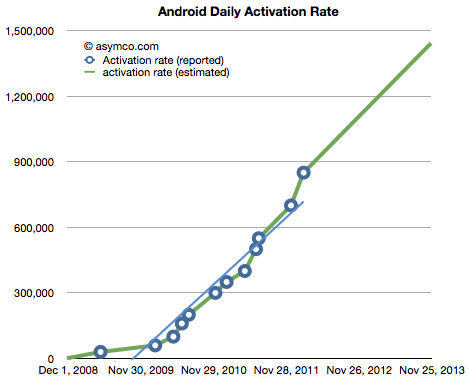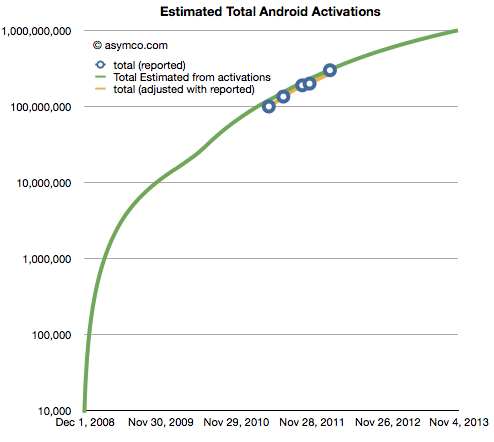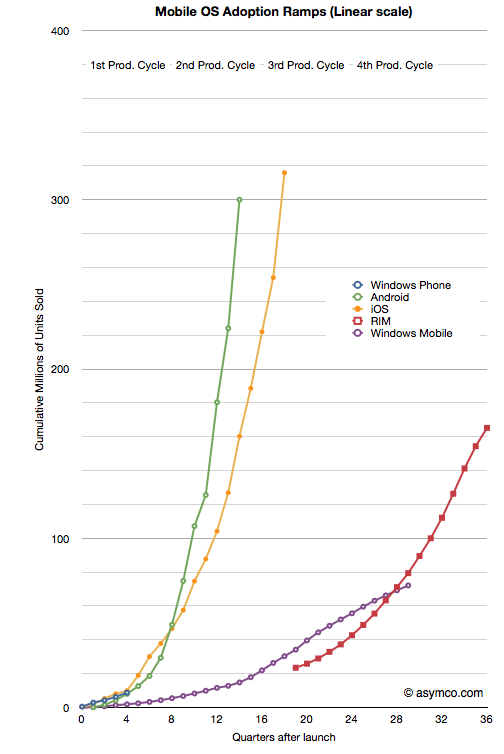The latest data from Google shows that the Android activation rate is increasing at a relatively steady rate (i.e. acceleration is constant). The data provided so far is in the blue circles below. The green line is the interpolation and extrapolation of that data.
As the graph is projected forward we get an activation rate of one million per day by mid August of this year. If it continues then we could see 1.5 million per day by end of 2013.
The corresponding number of cumulative activations is shown on the following log chart (with blue circles showing the actual data and the green estimates.)
The forecast is therefore that Android activations will cross one billion by November 2013.
The following chart compares the growth ramps of the various mobile operating systems indexed from the same starting points (measured in quarters after launch).
If Android does keep accelerating at the same rate then it will reach a billion users in five years. Of course, this total will not be a unified ecosystem in that many versions of Android will be co-existing. There will also be additional variants of Android which will not include Google services (these are not included in the totals above) which will compete to some degree with this platform.
However, it’s still an amazing story. The crucial question is whether the billion Android phones will have an effect on the opportunity for new entrants like Windows Phone and future BlackBerry variants as well as Bada and other Linux-based platforms.
The answer is that there will be well over 6 billion mobile “connections” by the end of 2013. ITU reports that “By the end of 2010, there will be an estimated 5.3 billion mobile cellular subscriptions worldwide, including 940 million subscriptions to 3G services.” It follows then that if this forecast is correct then by the end of 2013, Android will have about 17% penetration of the connections market.
Discover more from Asymco
Subscribe to get the latest posts sent to your email.



